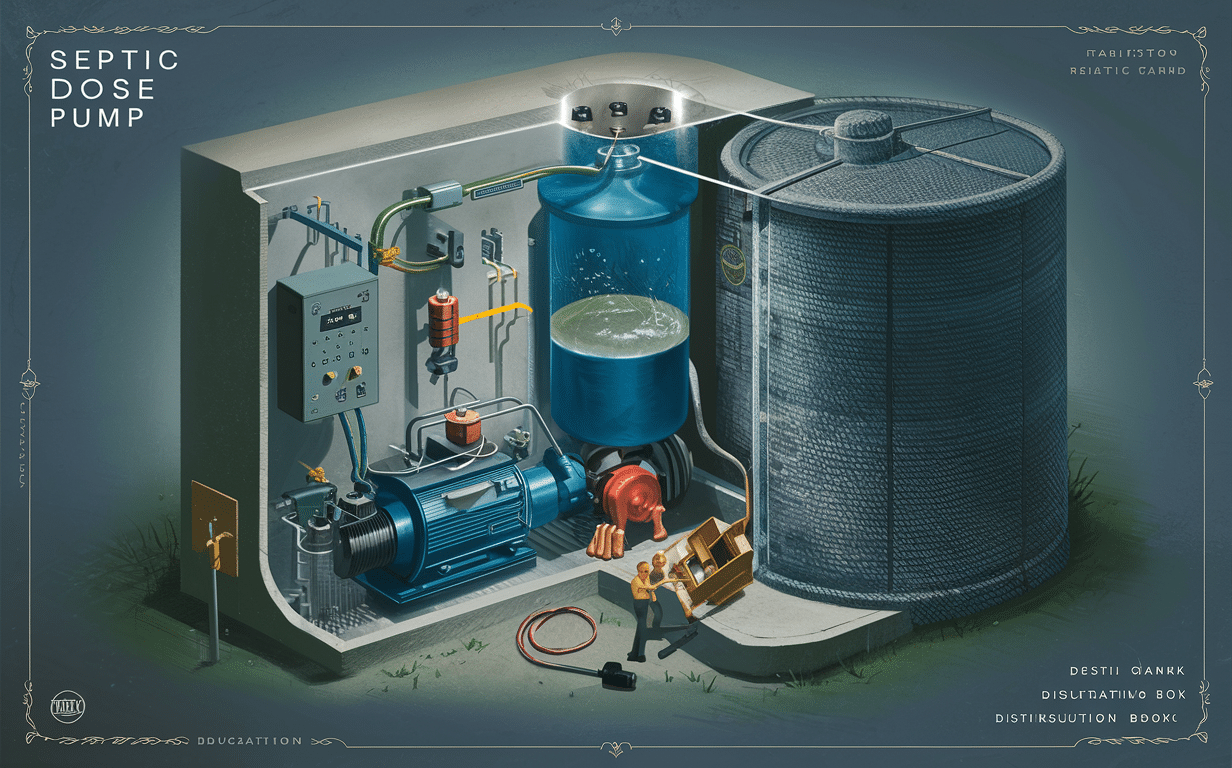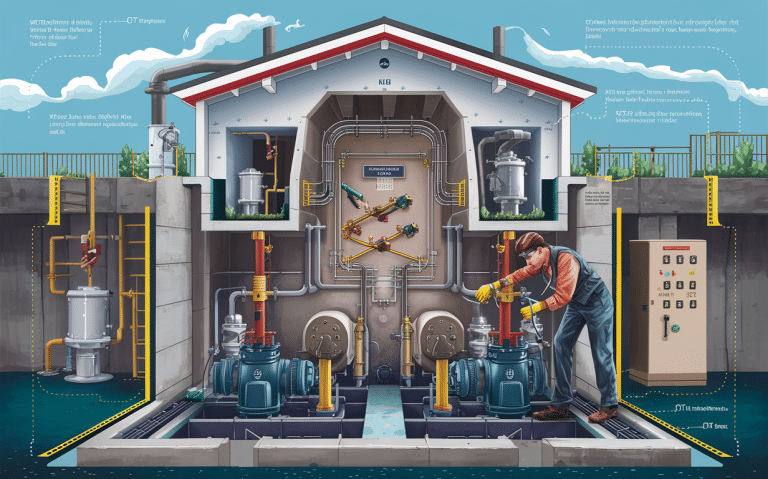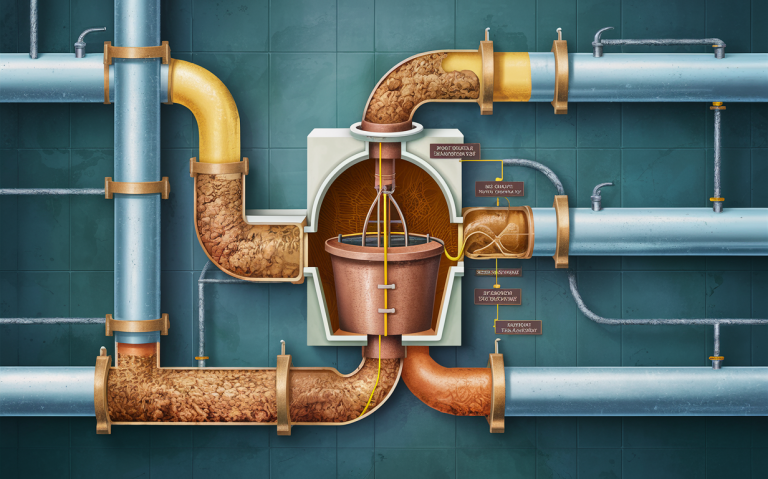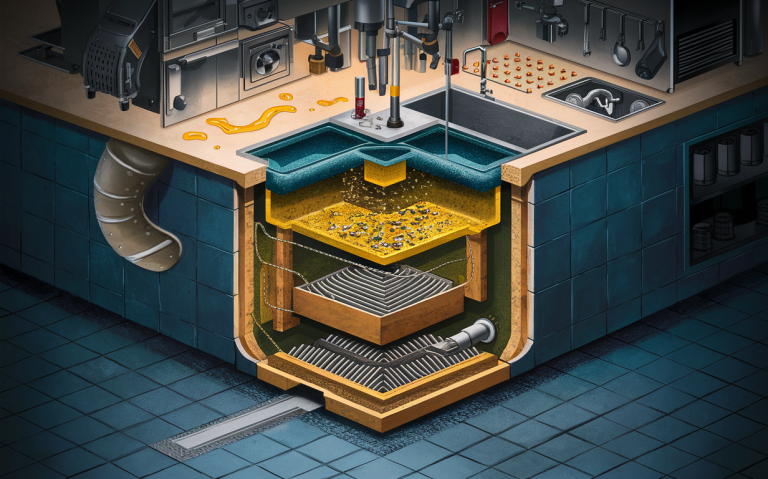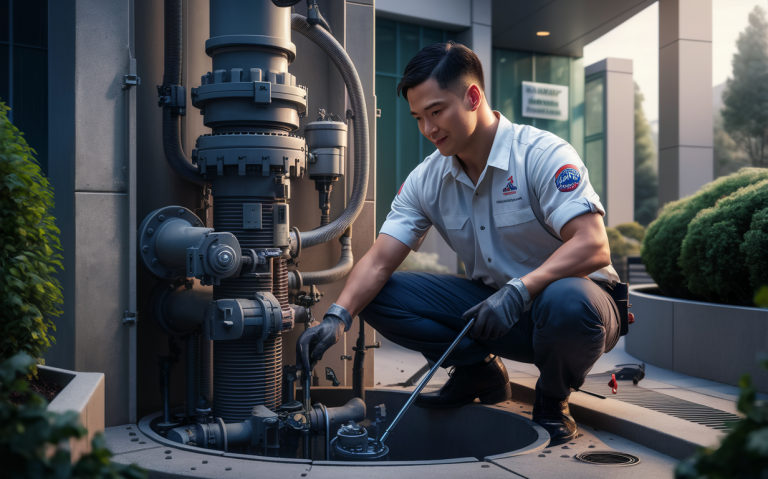Septic Dose Pump Repairs: Prevent Costly Failures
When it comes to maintaining a properly functioning septic system, the dose pump plays a crucial role. As a critical component responsible for transferring wastewater from the septic tank to the drain field, a malfunctioning dose pump can lead to serious issues.
In this article, we will discuss the importance of septic dose pump repairs and how they can help keep your system running smoothly.
Key Takeaways:
- Septic dose pumps are vital for transferring wastewater from the septic tank to the drain field
- Regular maintenance and timely repairs can prevent costly system failures
- Identifying the signs of a failing dose pump is essential for prompt repairs
- Working with experienced professionals ensures proper diagnosis and effective repairs

Understanding the Role of Septic Dose Pumps
In a septic system, the dose pump is responsible for moving wastewater from the septic tank to the drain field at regular intervals. This process, known as dosing, ensures that the drain field receives a consistent flow of wastewater, preventing oversaturation and promoting effective treatment.
The dose pump is typically located in a separate chamber called the pump tank or dosing tank, which is connected to the septic tank. When the wastewater in the septic tank reaches a certain level, the dose pump is activated, sending a predetermined volume of wastewater to the drain field.
Importance of Regular Maintenance
Like any mechanical component, septic dose pumps require regular maintenance to ensure optimal performance and longevity. Neglecting routine maintenance can lead to premature wear and tear, reducing the pump’s efficiency and increasing the risk of failure.
Some essential maintenance tasks include:
- Checking the pump’s electrical connections and wiring for any signs of damage or corrosion
- Inspecting the pump’s intake screen for clogs or debris
- Testing the pump’s operation to ensure it is cycling properly
- Cleaning the pump tank and float switches to prevent buildup and malfunctions
By scheduling regular maintenance with a qualified septic professional, you can catch potential issues early on and prevent costly repairs down the line.

Identifying Signs of a Failing Dose Pump
Recognizing the signs of a failing septic dose pump is crucial for prompt repairs and avoiding more severe problems. Some common indicators include:
- Abnormal noises coming from the pump tank, such as grinding, rattling, or humming
- Visible leaks or pooling water around the pump tank or drain field
- Slow or incomplete draining of fixtures, such as toilets, sinks, or showers
- Foul odors emanating from the septic system or drain field
- Sewage backup into the home or surfacing in the yard
If you notice any of these signs, it is essential to contact a septic professional immediately for an inspection and necessary repairs.
Common Causes of Septic Dose Pump Repairs
Several factors can contribute to the failure of a septic dose pump, including:
- Clogged intake screen or impeller due to debris or foreign objects
- Electrical issues, such as damaged wiring, loose connections, or a faulty control panel
- Mechanical wear and tear, including worn bearings, seals, or impellers
- Corrosion of the pump components due to exposure to harsh wastewater
- Improper installation or sizing of the pump for the septic system’s needs
| Cause of Failure | Potential Consequences |
|---|---|
| Clogged intake screen or impeller | Reduced pumping capacity, increased strain on the pump motor |
| Electrical issues | Intermittent operation, complete pump failure |
| Mechanical wear and tear | Decreased pumping efficiency, leaks, and eventual breakdown |
| Corrosion | Deterioration of pump components, reduced lifespan |
| Improper installation or sizing | Inadequate wastewater transfer, overworking of the pump |
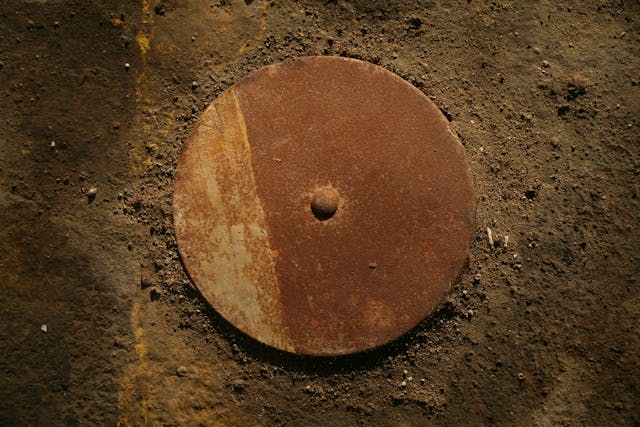
Diagnosis and Repair Process
When a septic dose pump fails, it is essential to have it diagnosed and repaired by a qualified septic professional. The repair process typically involves the following steps:
- System inspection: The technician will assess the entire septic system, including the pump tank, to identify the root cause of the problem.
- Pump removal: If necessary, the technician will remove the dose pump from the tank for further inspection and repair.
- Component repair or replacement: Depending on the extent of the damage, the technician may repair or replace specific components, such as the impeller, seals, or wiring.
- Pump reinstallation: Once the repairs are complete, the technician will reinstall the pump and ensure proper operation.
- System testing: The technician will test the entire septic system to confirm that the dose pump is functioning correctly and that there are no other issues.
Choosing the Right Repair Professional
When it comes to septic dose pump repairs, it is crucial to work with an experienced and licensed septic professional. Look for a company that:
- Has a proven track record of successful repairs
- Employs certified technicians with extensive knowledge of septic systems
- Uses high-quality replacement parts and equipment
- Offers comprehensive warranties on their work
- Provides transparent pricing and clear communication throughout the repair process
By choosing the right repair professional, you can ensure that your septic dose pump is repaired efficiently and effectively, minimizing downtime and preventing future issues.
Preventive Measures to Extend Pump Life
In addition to regular maintenance and timely repairs, there are several preventive measures you can take to extend the life of your septic dose pump:
- Avoid flushing non-biodegradable items, such as wipes, dental floss, or cotton swabs
- Minimize the use of harsh chemicals, including bleach and drain cleaners
- Spread out laundry and dishwasher loads to prevent overwhelming the system
- Fix leaky fixtures promptly to reduce excess water entering the septic tank
- Schedule regular septic tank pumping to prevent solids from entering the pump tank
| Preventive Measure | Benefit |
|---|---|
| Avoid non-biodegradable items | Prevents clogs and damage to the pump impeller |
| Minimize harsh chemicals | Protects beneficial bacteria in the septic tank and prevents corrosion |
| Spread out water usage | Allows the pump to cycle properly and prevents overloading |
| Fix leaky fixtures | Reduces excess water in the septic tank, preventing pump overwork |
| Regular septic tank pumping | Keeps solids from entering the pump tank and causing damage |
By implementing these preventive measures, you can help your septic dose pump operate more efficiently and reduce the likelihood of premature failure.
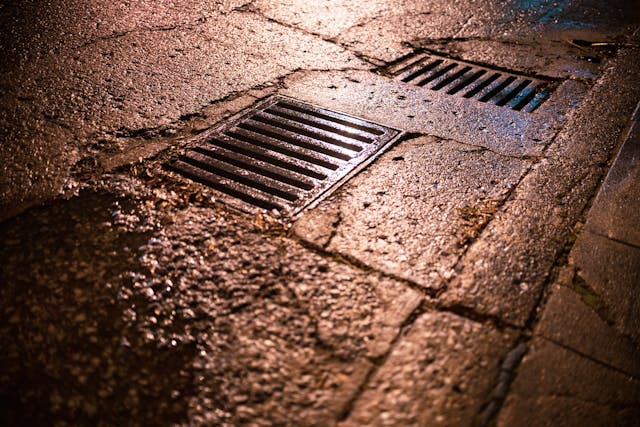
The Cost of Neglecting Dose Pump Repairs
Ignoring the signs of a failing septic dose pump or delaying necessary repairs can lead to severe consequences for your septic system and your wallet. Some potential costs of neglect include:
- Complete pump failure, requiring expensive replacement
- Sewage backup into the home, causing property damage and health hazards
- Drain field oversaturation, leading to costly repairs or replacement
- Environmental contamination, resulting in fines and remediation expenses
In most cases, the cost of prompt repairs is far less than the potential expenses associated with neglecting a failing dose pump.
Conclusion
Septic dose pump repairs are an essential aspect of maintaining a healthy and efficient septic system. By understanding the role of the dose pump, recognizing the signs of failure, and working with a qualified professional, you can ensure that your system continues to function properly.
Regular maintenance, timely repairs, and preventive measures can help extend the life of your dose pump and prevent costly failures. Don’t wait until it’s too late – if you suspect a problem with your septic dose pump, contact us, we are a trusted septic professional.
If you’d like to receive a quote to septic pump dose repair please give us a call (888) 845-2564 or fill out our contact form and we’ll get right back to you.

